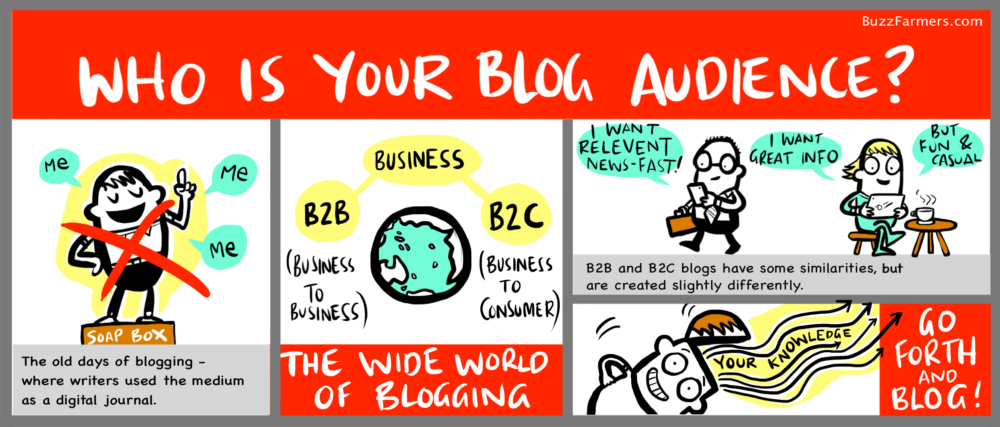A blog style guide is the closest thing your contributors can get to operating instructions.
“A foolish consistency is the hobgoblin of little minds, adored by little statesmen and philosophers and divines,” Ralph Waldo Emerson famously said. “Speak what you think now in hard words, and to-morrow speak what to-morrow thinks in hard words again, though it contradict every thing you said to-day.”
Yes, the dude was intense. Brooked no quarter. But I bet if he were writing and lecturing in the 21st century, even Emerson would cobble together a blog style guide including his craaazzyy preferred usage of “to-morrow” and “to-day.” Whichever “hard words” he might choose for content on the “10 Ways Transcendentalism Can Help Your Startup” or “Self-Reliance in the Age of Social Media” would stay true to the essayist’s voice, vision, and goals over the course of countless posts or presentations.
Why Have a Blog Style Guide?
In other words, Emerson was his own brand, and he had his own way of doing things, but his spelling, grammar, casing, cultural references, and formatting – his standards and practices – maintained a consistency that was anything but foolish.
You’re your own brand, too, and your business has its own way of doing things. A blog style guide isn’t meant to hem your writers in or stifle the creativity of your content – it’s designed to improve the quality of your communication.
Just as one might read a piece by Emerson and say “Hey, that’s a piece by Emerson!,” we want readers to say “Hey, that’s a piece by BuzzFarmers!” when they see a post pop up somewhere across the web. You want that – that’s when you know you’ve made it. You want to be all over the place without being all over the place. Recognition evokes all of those coveted “-ities” associated with audience development and retention: authenticity, reliability, and familiarity.
The best athletes play by the rules of the game, from tee-ball (well, OK, something resembling rules, at least) to the Major Leagues, and the most brilliant writers for publication need guidelines specific to the work they’re producing for a given outlet.
When you have several writers carrying out a crucial component of your marketing, they must all be on the same page. Readers know a well-executed blog with continuity when they see it, and they know a haphazard, ramshackle one, too. Which blog has a better chance of earning their trust for your brand?
So, why do we care so much about seemingly hobgoblin-ish, nitpicky stuff like whether to capitalize the “I” in “Internet”? Why do we insist that links open in a new window? Why do we, in fact, give a **** about an Oxford comma? Because our mission at BuzzFarmers is to help transform every client we collaborate with into a publisher that crafts relevant, helpful, goal-driven content capable of attracting visitors and converting them into customers.
And every great publisher we know has a great blog style guide.
Let’s take a look at a few examples.
[Tweet “Would Emerson write “10 Ways Transcendentalism Can Help Your Startup” if he were working today?”]Blog Style Guide Examples From Around the Publishing World
The Guardian
The Guardian is neck and neck with The New York Times as the best source for daily news and cultural coverage in the English language. Granted, they use British English, so they might spell “gray-colored diarrhea” like “grey-coloured diarrhoea,” but you get the point.
So formidable that it has its own Twitter account, the Guardian’s style guide is available for all to see here. It’s a sight to behold. While your company’s blog style guide might not demand quite the level of depth and breadth, it’s a good one to emulate in terms of structure, annotation, and specificity. It’s useful and humorous, unique to their publication and brand, while also outlining basic tenets of writing for publication.
Here’s an excerpt on parentheses:
parentheses
If the sentence is logically and grammatically complete without the information contained within the parentheses (round brackets), the punctuation stays outside the brackets.
(A complete sentence that stands alone in parentheses starts with a capital letter and ends with a stop.)
“Square brackets,” the grammarian said, “are used in direct quotes when an interpolation [a note from the writer or editor, not uttered by the speaker] is added to provide essential information”
Like many style guides, the Guardian’s doesn’t operate in a vacuum. It works in conjunction with the Collins English Dictionary, for instance. Yours can use the Associated Press Stylebook, The Chicago Manual Style, and/or various dictionaries as a supplementary layer of reference.
A List Apart
Your blog style guide can also use the webcentric A List Apart, which “explores the design, development, and meaning of web content, with a special focus on web standards and best practices.”
A List Apart’s highly recommended style sheet includes general notes, technical writing protocols, and policy on grammar and punctuation. Again, you don’t have to do everything the way they do it – we don’t, but they’re still a go-to for us in certain cases. Rather, their approach can inform yours.
Here’s an excerpt on lists, which could come in handy for content marketers in particular:
Lists
If any item in a list (ordered or not) forms a complete sentence, all items must begin with a capital letter and end with a terminal punctuation mark.
If no items in an unordered list form a complete sentence, skip the capitalization and terminal punctuation.
If the items in the list complete an unfinished introductory sentence, end all but the last item with a semicolon, add an “and” before the final item, and finish off with terminal punctuation.
Videomaker
Videomaker is a fantastic resource for multimedia producers, and their “Writers’ Guidelines” offer the philosophical in addition to the nitty gritty.
Take, for instance, this passage on “Editorial Attitude”:
“The editorial tone of Videomaker is one of accessibility, enthusiasm and support for all levels of video producers. It is one of encouragement towards the beginner, and never ridicules. The tone is not elitist or condescending, and is always aimed at the grassroots videographer.
“Regardless of the style and approaches taken by our writers, artists and designers, their tone and attitude should remain consistent with the statement above.”
And this entry on numbers, dimensions, and percentages:
Numbers
Spell out “zero” through “nine”; use numerals thereafter.
Use numerals when referencing identifications (pin 4 or Fig. 6) or electrical units (9-volt output).
Spell out fractions less than one (three-quarter-inch); use numerals for fractions greater than one (4 1/4).
Dimensions, Weights, Degrees
In text, use numerals for amounts, but spell out dimension units. (The VCR, measuring 15 inches wide by 4 inches high by 13 inches deep, comes with a 5-foot remote.) In charts and diagrams, abbreviate all units of measurement.
Use numerals for amounts and spell out weight units, as well as the word “degree.” (The camera weighs 5 pounds, 1 ounce; camera in hand, he panned 180 degrees.)
Percentages
Spell out the word “percent” in text. Use decimals instead of fractions when appropriate. For amounts less than 1 percent, precede the decimal with a zero. (The price of tripods rose 0.8 percent.) Use the percent sign (%) in charts and graphs only.
As a reporter, I had my stylebook with me at all times. As a managing editor for BuzzFarmers, it’s the same story. The scope of your blog style guide is up to you, but it must standardize your content and provide a framework. Remember: It will make writing – and reading – easier, not more difficult. The focus is your copy, and how you can make it smoother and more accessible for your audience.
Do you have a blog style guide? Considering building one? Give us a call if you have any questions!





